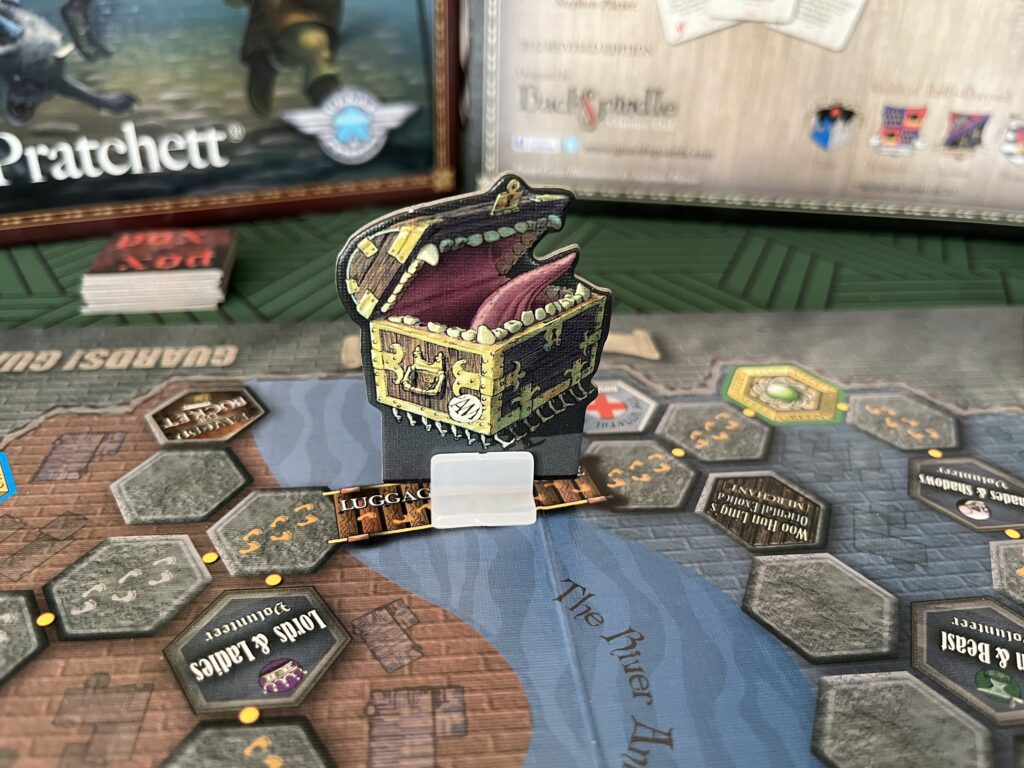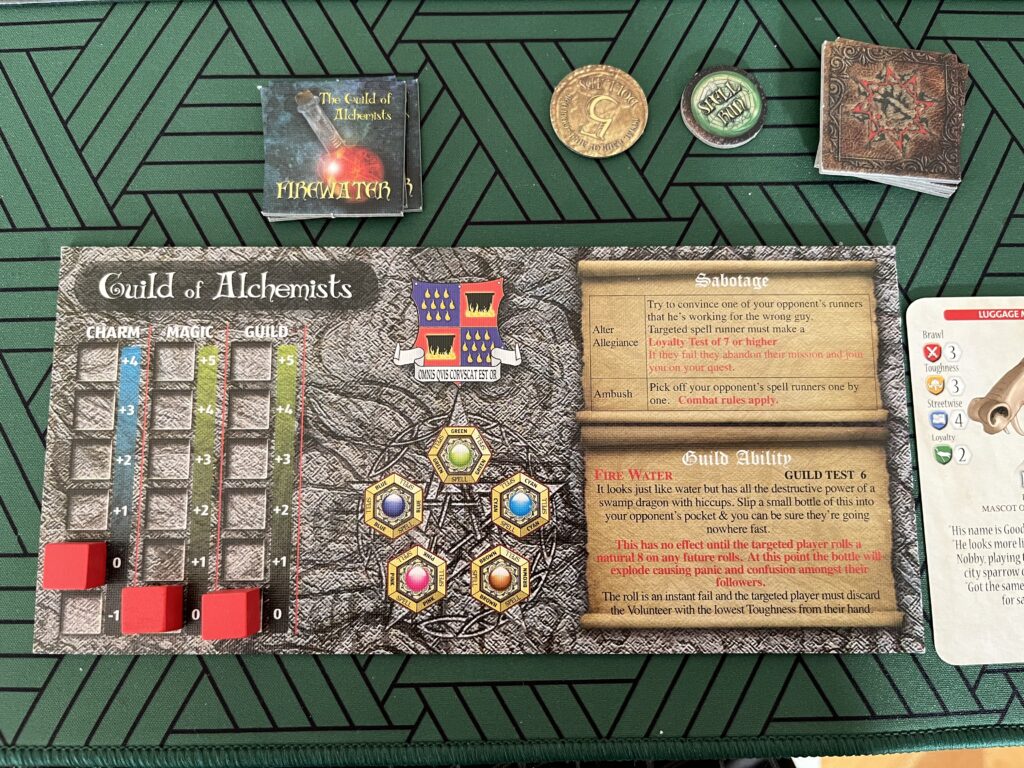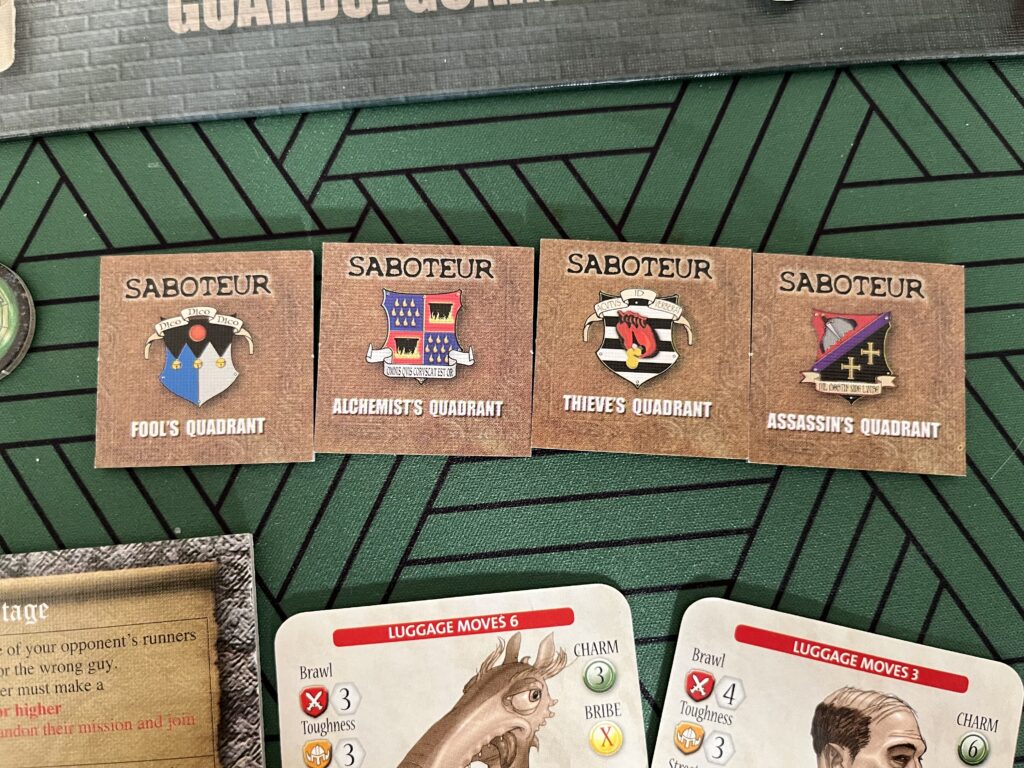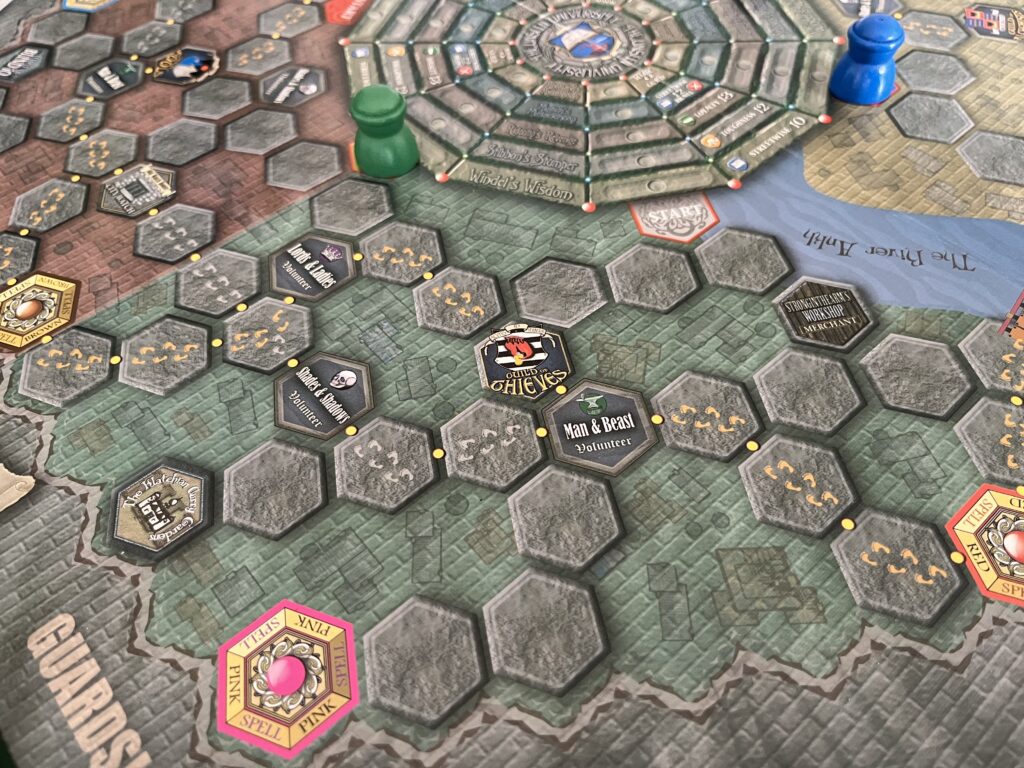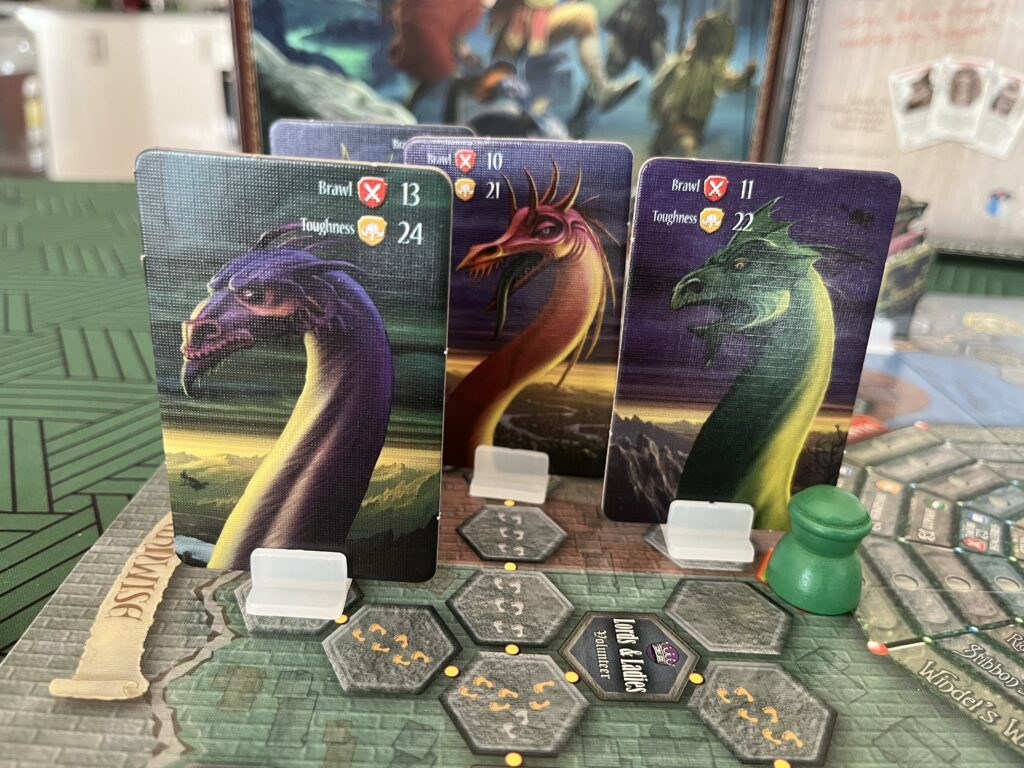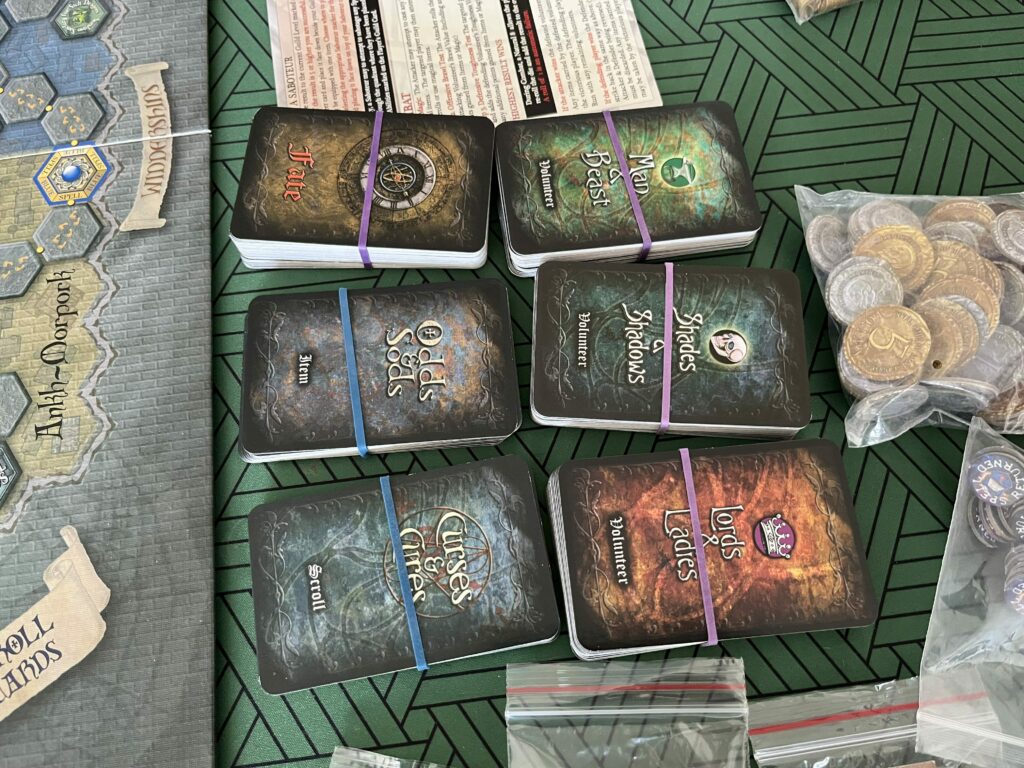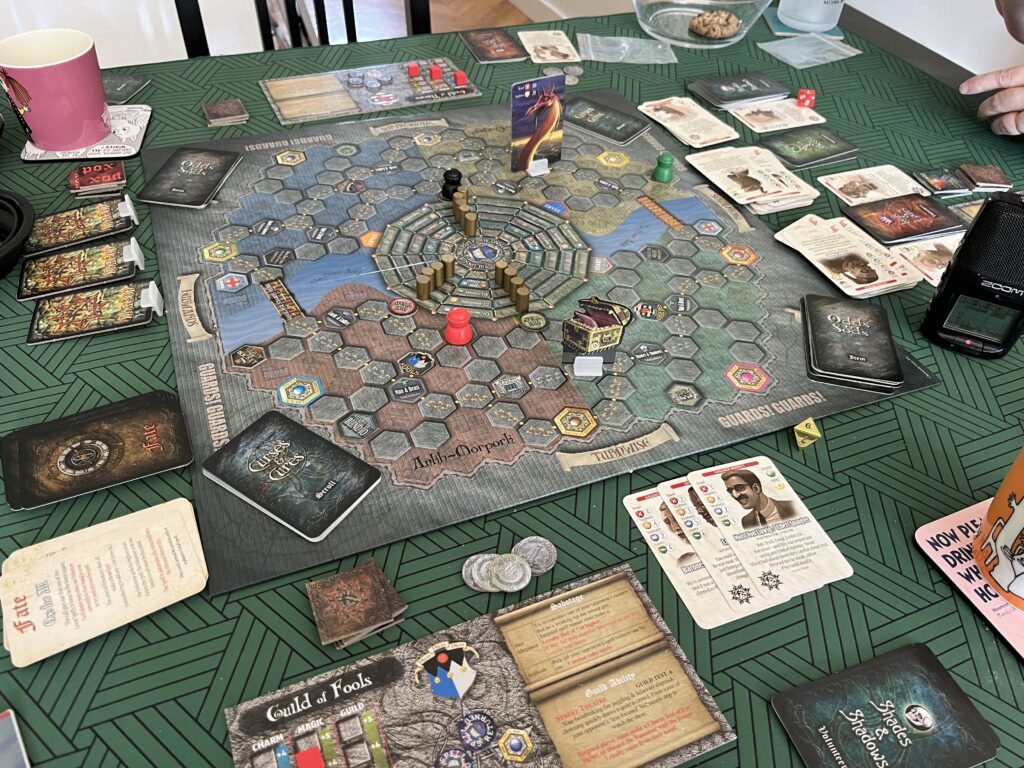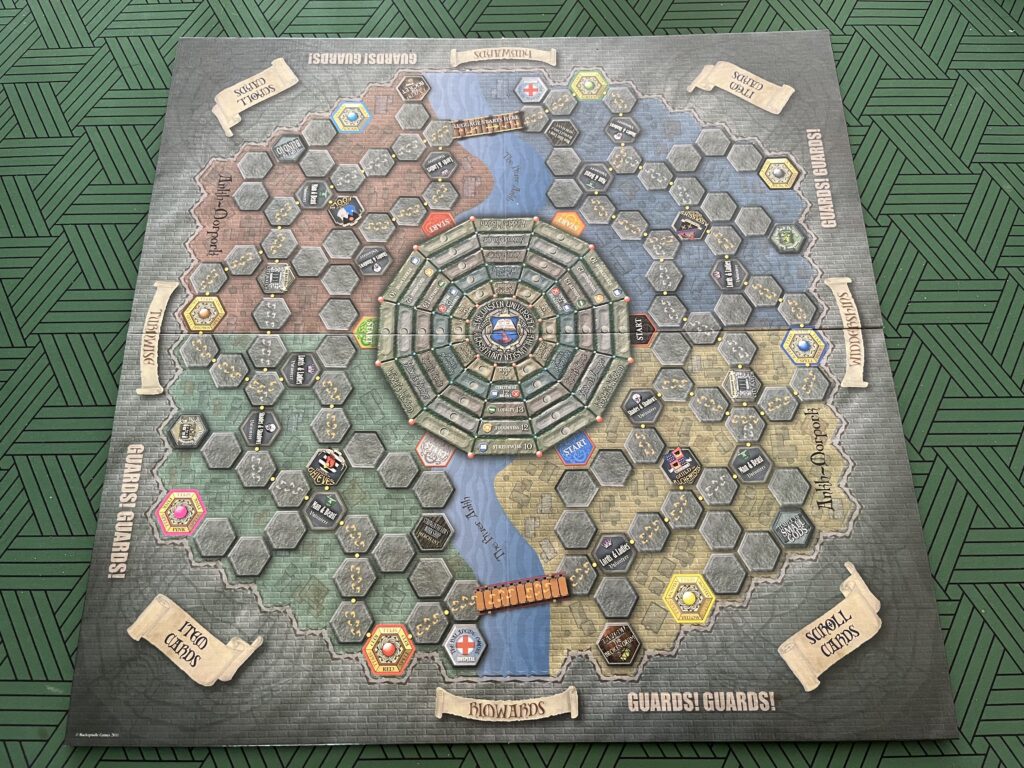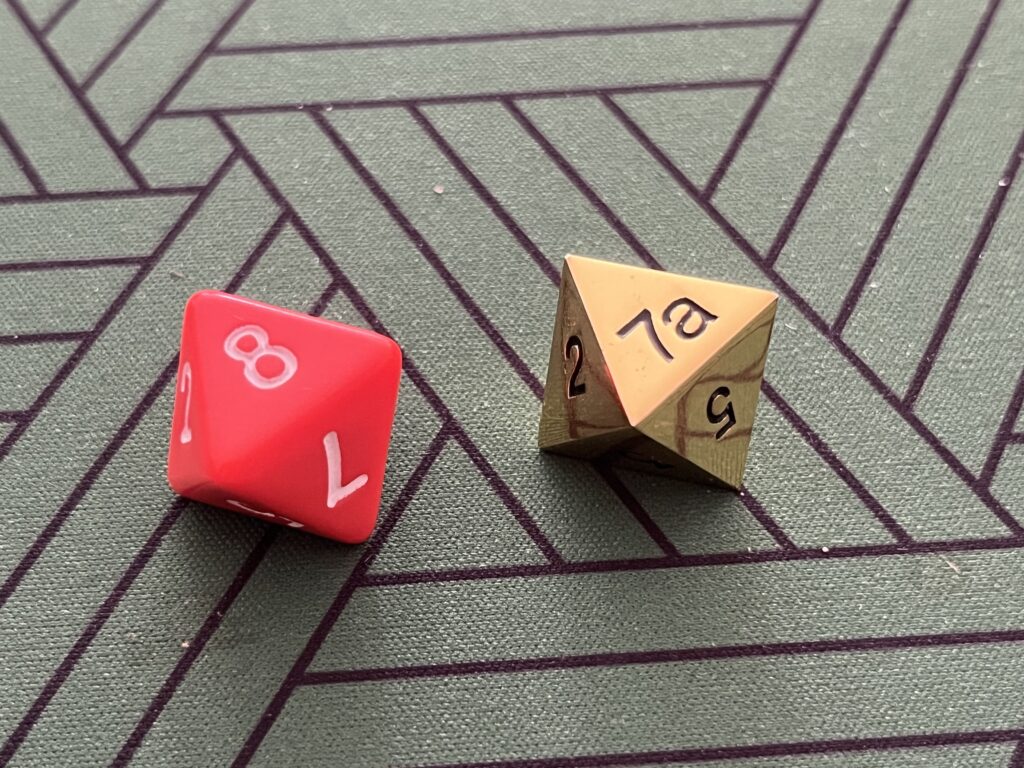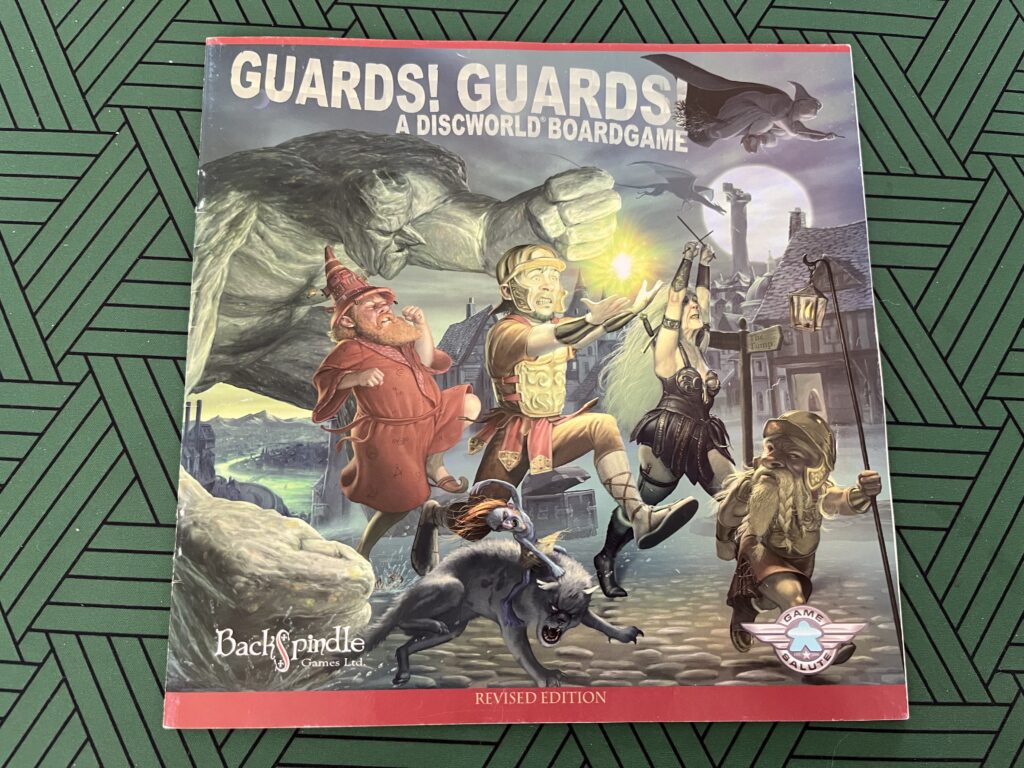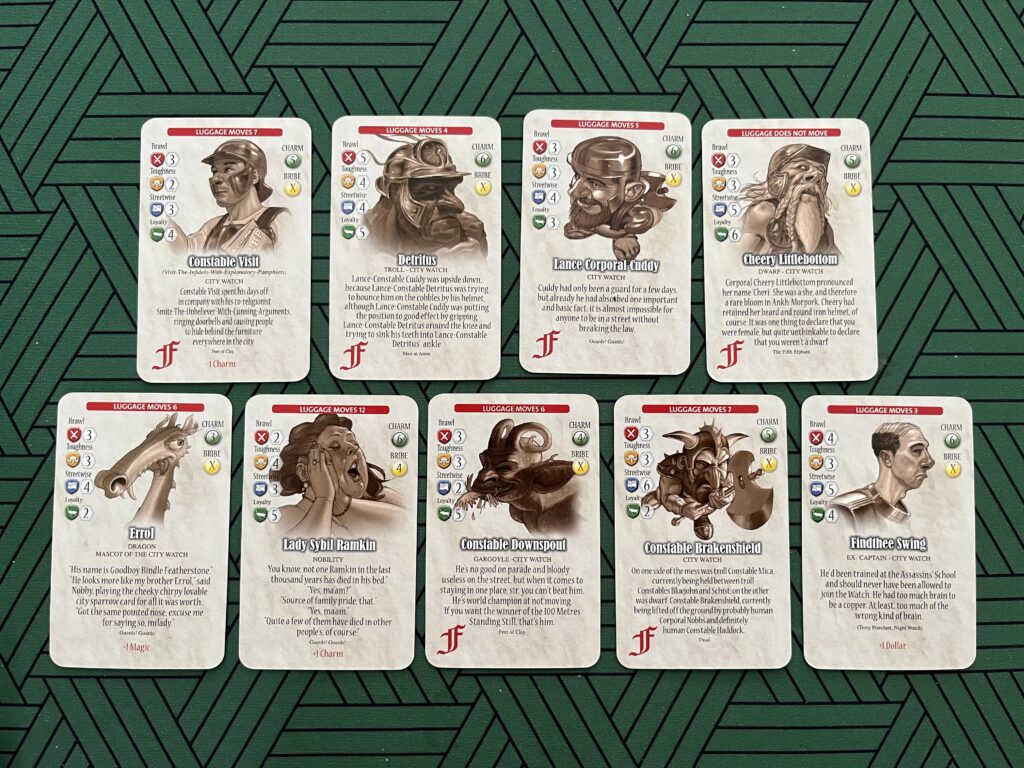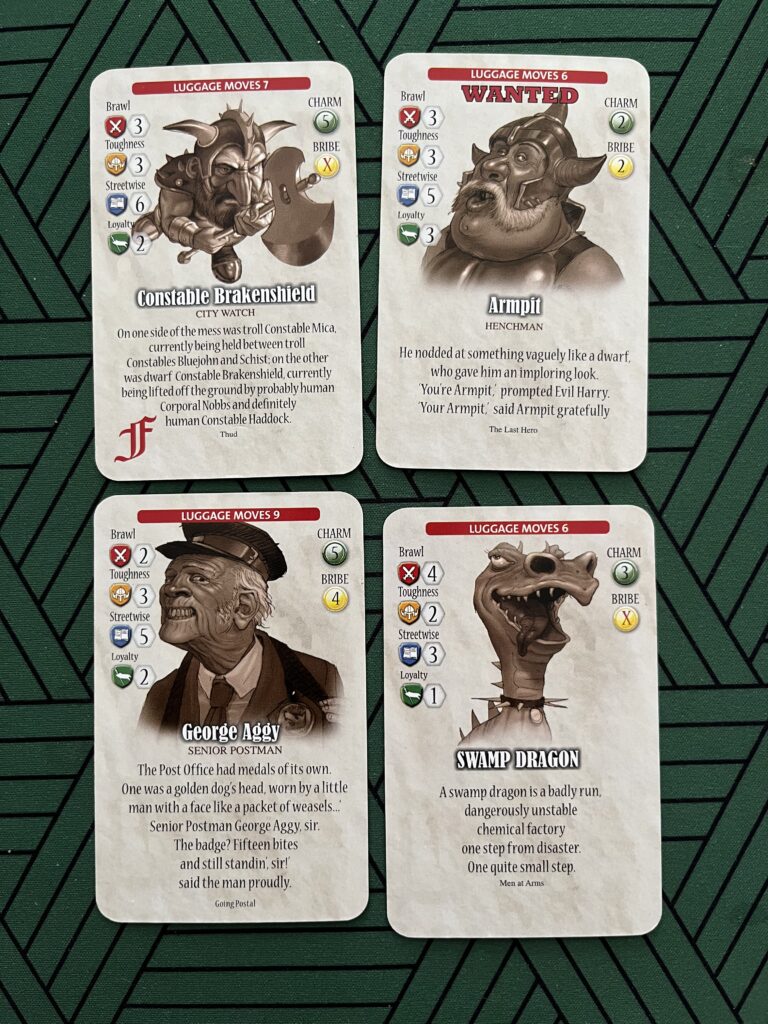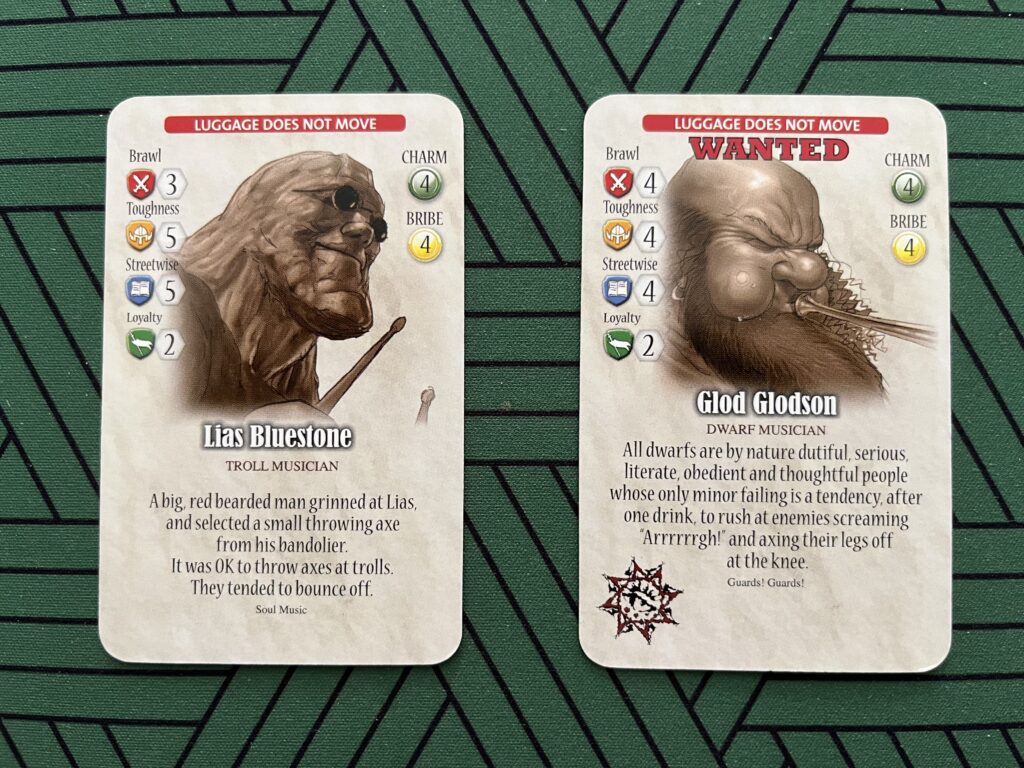#Pratchat75 – …And That Spells Trouble
In this very three-quarters-of-a-century episode, Liz, Ben and guest Dr Melissa Rogerson get out the eight-sided dice and roll for initative – or at least cunning – as we play the 2011 board game, Guards! Guards!, designed by Leonard Boyd and David Brashaw, and based on the Discworld novels by Terry Pratchett.
The eight great spells have escaped from Unseen University’s library, ready to unleash chaos on Ankh-Morpork! Thankfully Commander Vimes has taken charge. He’s assigned members of the Watch (that’s you) to liaise with four of the Guilds to round up volunteers and bring those spells back. But Guild rivalries run deep, and surely the Patrician will look kindly on whoever saves the day the most. So if one of the other Guilds’ volunteers should go missing or explode or fall into the Ankh, your Guild would only be too willing to shoulder more of the burden of saving the city…
Created by two Irish Discworld fans who approached Terry with the idea (see David Brashaw’s great interview with The Truth Shall Make Ye Fret), Guards! Guards! A Discworld Board Game sees players roaming about a hexagon-based map of Ankh-Morpork collecting Discworld characters, casting spells from scrolls, equipping magic items and occasionally fighting dragons. Which sounds suspiciously like a very different kind of game… Originally published in 2011 by BackSpindle Games and Z-Man Games, and reprinted with a revised rulebook in 2012, Guards! Guards! was a hit with fans – but board game hobbyists were less enthusiastic.
Have you played Guards! Guards! – and if so, how long did it take you? Do you like the kind of game where being mean to the other players is part of the fun? Do you think it captures the essence of the source material, and if so, which books in particular? Is this the best name for the game, or do you have a better suggestion? (Ours was Guilds! Guilds!) And should we play an exhibition match at the Australian Discworld Convention, of this or one of the other games? We’d love to hear what you think: use the hashtag #Pratchat75 to join the conversation.
Podcast: Play in new window | Download (Duration: 1:36:30 — 44.7MB)
Dr Melissa Rogerson is a Lecturer and Assistant Professor in the School of Computing and Information Systems at The University of Melbourne. She was last on for #PratchatPlaysThud, “The Troll’s Gambit”, discussing the first Discworld board game in Nivember 2022. Melissa’s current research is about hybrid games which use both physical and digital components, as well as the possibility of using games to tell the stories of older people. You can find out more about her work at hybridgameresearch.net, melissarogerson.com, or find her on Twitter and Mastodon as @melissainau, and on BoardGameGeek as melissa. (A mentioned last time, Ben is on there too, as beejay.)
As usual you’ll find comprehensive notes and errata for this episode on our website, including lots of photos of the components we discuss.
Next episode we’ll be discussing a Discworld novel for the first time in ages – and not just any Discworld novel, but one of the most beloved! Yes, for #Pratchat76 we’re finally talking about Monstrous Regiment. Get your questions in before the last week of February to give them a chance of getting on the show! Use the hashtag on social media (Mastodon, Twitter, Facebook, Instagram and BlueSky), or email us at chat@pratchatpodcast.com.
Want to help us get to the end of our six(ish) year mission and read every Pratchett book – and more? You can support us with a tip, or a subscription for as little as $2 a month, and that’s cuttin’ our own throats! See our Support Us page for details.


